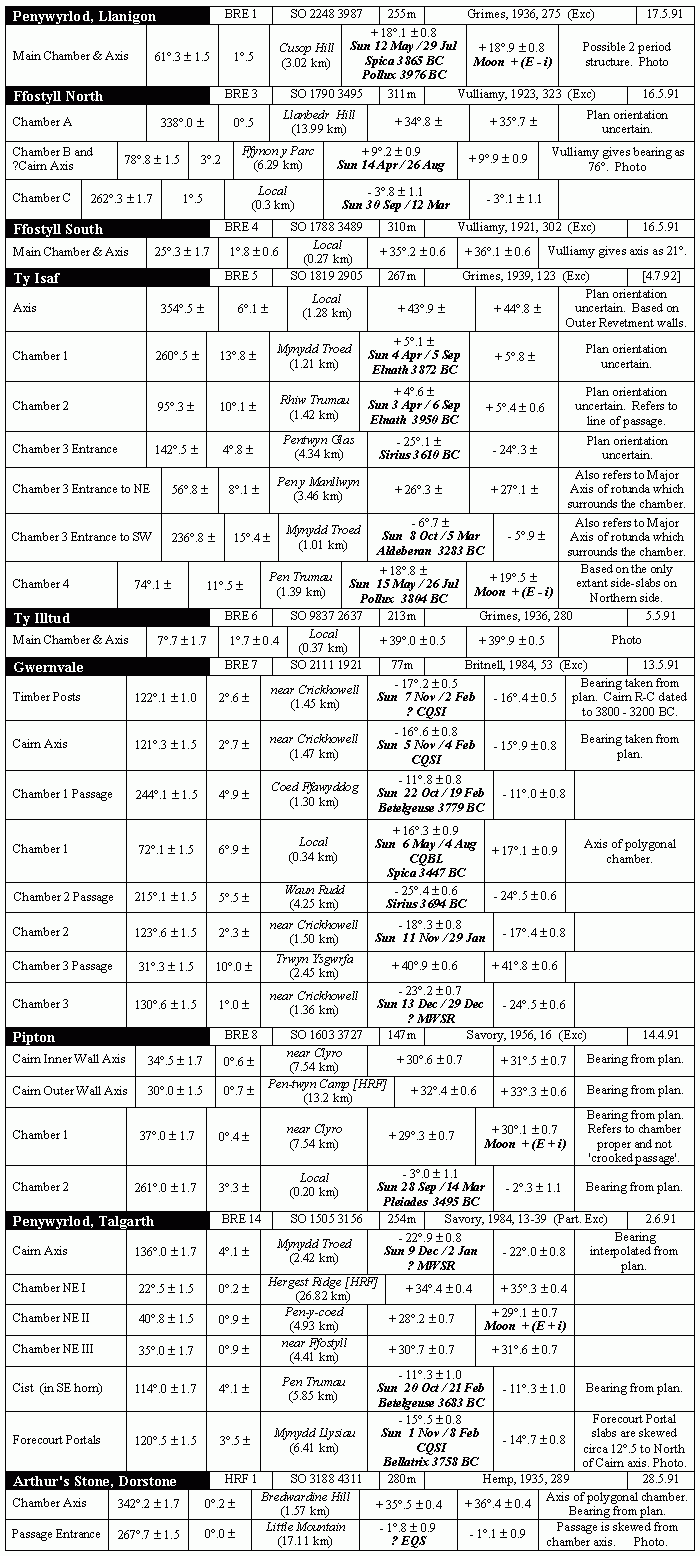|
|
|
| Archaeoastronomy in South Wales: |
Neolithic Tombs in BRE & HRF |
Neolithic Tombs in Brecknockshire
and Herefordshire
by Martin J. Powell
The long cairns listed here are located within the Black Mountains region of South Wales. They form a geographically isolated group of the so-called Severn-Cotswold long cairn building tradition. The Black Mountains is one of only a few regions of Britain where radiocarbon dates have been obtained from excavated sites, subsequently lending support to the proposed dating scheme of these tombs.
|
|
|
Ty Isaf long cairn, situated near the Western edge of the Black Mountains. A handful of orthostats are the only structural parts of the tomb which are visible above ground today. |
The majority of the tombs under study are laterally chambered, having several chambers opening from the sides of the long cairn, rather than a single chamber opening immediately behind the forecourt as occurs in the Glamorgan and Monmouthshire tombs. In a laterally chambered tomb there is no main chamber opening into the forecourt; it is instead replaced by a blind entrance (sometimes called a 'false portal') so giving the impression of the prescence of such a chamber. The section of the cairn behind the portals were massively filled with cairn material. The tombs, whilst sharing structural components, display considerable diversity in the layout of the chambers.
Of notable prominence in this list are the long cairns of Gwernvale (SO 211 192) and Penywyrlod (Talgarth) (SO 150 315), which underwent extensive excavations in the 1970s and were assigned radio-carbon dates placing them firmly within the fourth millennium BC. Gwernvale had a timber structure at its entrance which pre-dated the construction of the cairn itself. Penywyrlod (Talgarth) is the largest long cairn in the entire survey area and it is quite possibly the oldest. The Ty Isaf long cairn (SO 182 290) was excavated in the 1930s and this revealed a laterally-chambered cairn with an oval rotunda, complete with its own chamber and passage, set into the tail end of the cairn. This may have been part of the original design plan or perhaps was inserted at a much later date. Due to the complex architecture of these three monuments, they contain a larger than average number of considered astronomical lines.
[Several entries in the following table include a photograph of the site. To view the image, click on the word 'Photo' on the right of the table; the image will open in a new window]
Survey Results (Explanation of Data Table)

Copyright Martin J Powell August 2001
| Archaeoastronomy in South Wales: |
Neolithic Tombs in BRE & HRF |
|
|
|
|
|
|
|